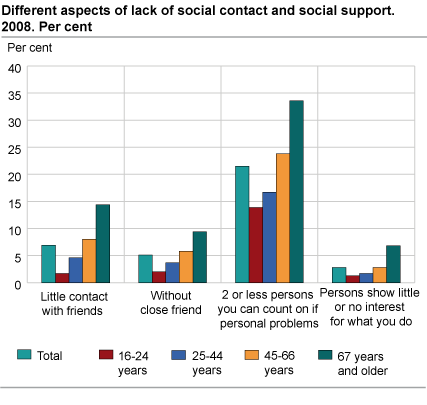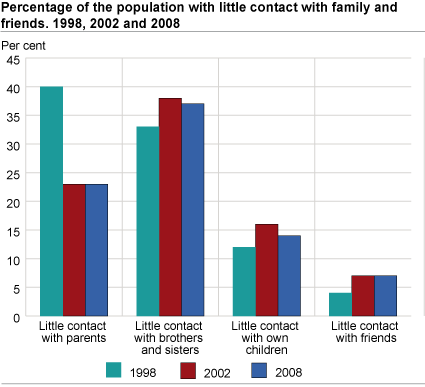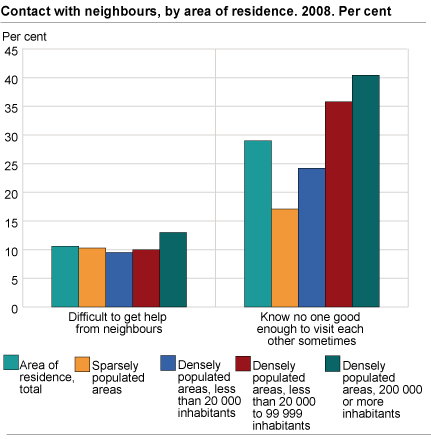Content
Published:
This is an archived release.
More elderly people lack a close friend
Most Norwegians have a close friend they can confide in. But as we get older more of us say they don’t have someone they feel close to or someone they can confide in.
5 percent of the Norwegian population say they lack a close friend, 9 percent in the age group 67 years and older say the same. Both in total and among the elderly this is a small increase from previous surveys in 2002 and 2005. If we look at contact with friends in general, the same pattern is present. In 1998 4 percent reported that they had little contact with friends, and in 2002 and 2008 7 percent stated the same. If we look at the oldest age group, persons aged 67 years and older, 14 percent says they have little contact with friends in 2008.
More frequent contact with friends than family
23 per cent have little contact with their parents, which means that they see them less often than every months. However, most norwegians see their parents monthly or more often1.
14 percent have little contact with their own children, while 37 percent have little contact with their brothers and sisters. These patterns have been stable from 1998 to 2008.
Even though most people see their family monthly or more often, even more people see their friends this often. Only 7 per cent see their friends less often than every month. Only the oldest age group usually see their family more often than they see friends.
Neighbours help each other - but seldom visit each other
In addition to family and friends neighbours are also a part of peoples network. Most people think it’s easy to get practical help from their neighbours. Almost nine out of ten say that it’s not difficult to get practical help from neighbours if they need it. More people in the oldest age group find it difficult to get practical help. But even though neighbours think it’s easy to help each other, many answer that they don’t know anybody in their neighbourhood good enough to them. Almost three out of ten say so.
Health Interview SurveyStatistics Norway’s Health Interview Survey (HIS) is a stable and regular source of data about different aspects of the population’s health. The survey runs every three years. The data is representative for the population living in private households. Every survey gives a picture of the population’s health on a given point in time. The regularity of the survey supplies data so that we can follow changes over time. The survey covers data on self-rated health, about illness, disability, living habits, health services and social contact. The information being gathered is based on personal interviews with approximately 6 500 individuals. The response rate was 66,8. For tables - see StatBank on the left side on the screen. For documentation of the survey, see Dokumentasjonsrapport . |
Contact
-
Håvard Bergesen Dalen
E-mail: havard.dalen@ssb.no
tel.: (+47) 40 90 23 50



